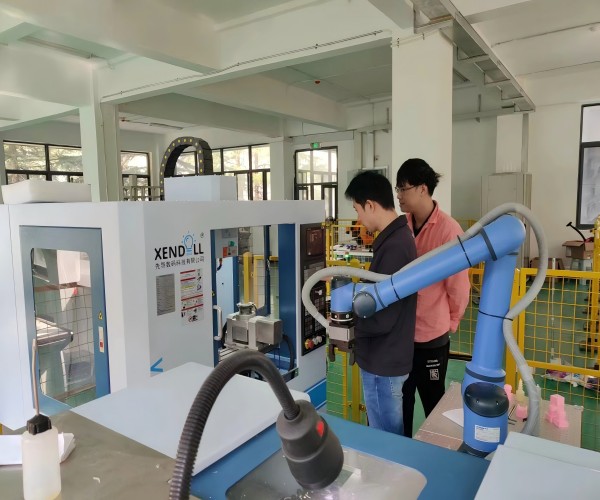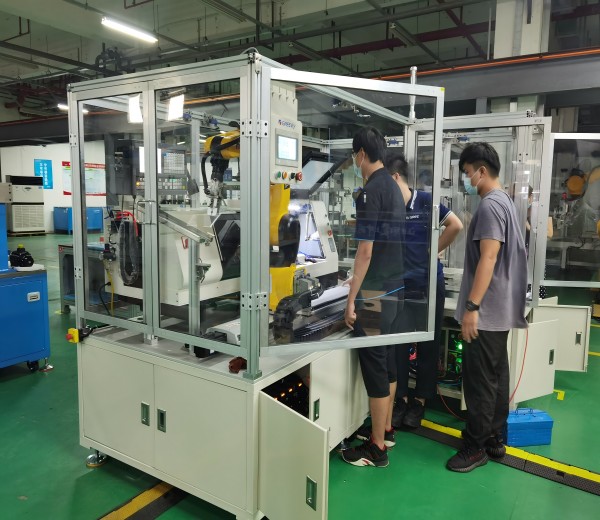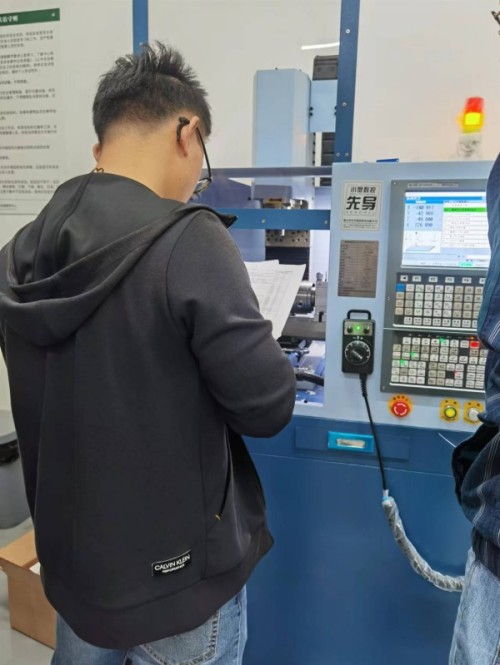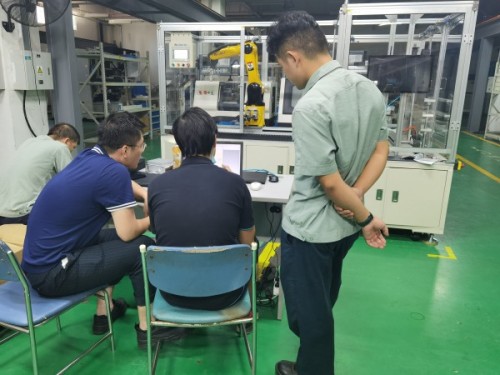Blog
Xendoll has 22 years of experience in the production of small machine tools. We will help you choose the suitable machine and share our experience in CNC machining with you.
 Nov 12, 2024
Nov 12, 2024
 Xendoll
Xendoll
 950
950
The 5-axis CNC milling machine is widely used in manufacturing and precision part processing due to its high accuracy, efficiency, and ability to process complex parts. However, over time, the machine may encounter various faults. Understanding the common causes and solutions for these faults is crucial for improving machine lifespan and maintaining processing quality. This article provides a detailed overview of common faults and their solutions for Desktop 5-Axis CNC Milling Machines from a training perspective.

A common issue with CNC milling machines is that the motor fails to start or run, usually due to electrical or mechanical system faults. Possible causes include:
Power Supply Issues: Unstable voltage or loose power outlets can prevent the motor from starting properly.
Motor Control Signal Failure: A damaged motor driver or loose cable connections may prevent the motor from receiving the correct operational signals.
Motor Malfunction: Internal damage to the motor components may result in the motor failing to operate.
Unstable motion or abnormal vibration in a 5-axis CNC milling machine can affect processing accuracy. Common causes include:
Wear in the Mechanical Drive System: Components such as gears, lead screws, and bearings may wear out, causing uneven mechanical movement.
Damaged Bearings: Precision bearings, when damaged, may cause uneven movement of the spindle or other parts, leading to vibration.
Improper Adjustment: If the machine's alignment, balance, or installation accuracy is not correct, it can cause abnormal vibration.

An unstable or irregular spindle speed can affect processing quality. Possible causes include:
Spindle Motor Faults: Problems with the spindle motor itself or its driver can cause fluctuations in speed.
Spindle Wear or Damage: Long-term use may result in wear of internal spindle components, leading to abnormal speed variations.
Unstable Power Supply: Voltage fluctuations or unstable frequency can also cause spindle speed instability.
Inaccurate feed accuracy is a common fault in CNC milling machines and directly impacts processing quality and production efficiency. Common causes include:
Worn Guide Rails: Over time, the guide rails of a CNC milling machine can wear down, leading to reduced positioning accuracy.
Drive System Failure: Faults in the servo motor or encoder can lead to inaccurate feed accuracy.
Tool Wear or Installation Issues: Severely worn tools or improperly installed tools can introduce errors during cutting.
The control system of a CNC milling machine acts as the "brain" of the machine, and its failure can cause the entire machine to stop operating. Common faults include:
Control Panel Malfunctions: Failures in the control panel or display can prevent operators from inputting commands.
Software Crashes: Crashes in the CNC program or bugs in the control software may cause the machine to stop or perform erroneous actions.
Communication Failures: Communication issues between the control system and machine components can prevent the machine from responding to commands or cause errors.

Solutions:
Check the Power Supply: Ensure that power plugs and outlets are properly connected, and that the voltage is stable. Use a multimeter to check if the power supply voltage meets the requirements.
Check the Motor Driver: Inspect the motor driver's indicator lights to see if it’s functioning correctly. If the driver is damaged, replace it in a timely manner.
Check Cable Connections: Ensure that cables are not damaged or loosely connected. Reconnect the cables if necessary.
Check the Motor: If the motor is damaged, contact a professional technician for repair or replacement.
Solutions:
Check Lubrication: Regularly inspect and replenish lubrication to ensure smooth operation of transmission system components.
Inspect Drive Components: Check gears, lead screws, and bearings for wear or looseness. Replace parts if necessary.
Adjust Alignment and Leveling: Ensure the machine is properly aligned and leveled for stability.
Check Vibration Sources: Use vibration analysis tools to locate the source of abnormal vibrations and repair or replace the faulty parts.
Solutions:
Check the Spindle Motor: Inspect the spindle motor’s electrical connections and condition to ensure it is functioning properly.
Check the Spindle Lubrication System: Ensure the spindle lubrication system is working correctly to avoid excessive wear causing speed instability.
Check Power Supply Stability: Use a voltage stabilizer to ensure the power supply is stable, preventing frequency fluctuations from affecting spindle speed.
Solutions:
Check Guide Rails and Lead Screws: Regularly check the guide rails and lead screws for wear or debris. Clean them and apply lubricant as needed.
Calibrate the Drive System: Calibrate the servo motors and encoders to ensure the accuracy of the drive system.
Check Tool Condition: Regularly inspect tools for wear and ensure they are securely installed. Replace worn tools promptly.

Solutions:
Restart the Control System: If the software crashes, try restarting the control system. If it does not recover, check the system settings and programs.
Check Communication Lines: Ensure that the communication lines between the control system and other machine components are secure and intact.
Replace Faulty Parts: If the control panel or display is damaged, replace the faulty parts promptly.
Regular Maintenance and Care: Follow the equipment manual to perform regular maintenance, including cleaning, lubrication, and calibration.
Operator Training: Ensure that operators are properly trained in correct operating procedures to minimize human error and prevent faults.
Monitoring System Checks: Regularly check and update the software of the control system to ensure its stability and security.
The Desktop 5-Axis CNC Milling Machine is a high-precision, high-efficiency processing device, but common faults may arise during its operation. By understanding the causes of these faults and their solutions, operators can troubleshoot and repair the machine in a timely manner to ensure its normal operation, thereby improving production efficiency and processing quality. Regular maintenance, operator training, and mastery of fault troubleshooting skills are key to maintaining the machine’s long-term stability and performance.
If you need related products, please click to contact:https://www.xendolltools.com/product/5_axis_milling.html



 Show all our samples
Show all our samples
 Provide you with a free quote
Provide you with a free quote
 Answer all the questions you may have
Answer all the questions you may have
 Guided installation and other options
Guided installation and other options